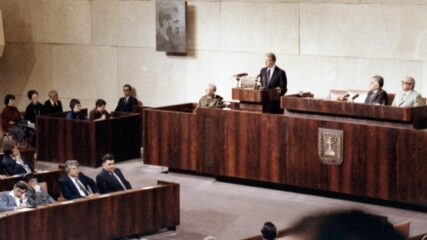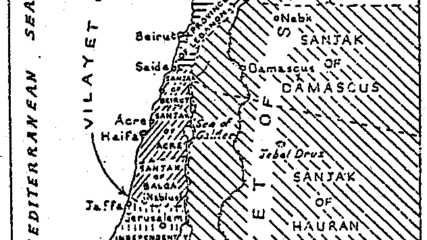May 24, 1895
Marcel Janco, a founder of the Dada movement and a major influence on modern Israeli art, is born into a wealthy family outside the Jewish quarter of Bucharest, Romania.
Trained at the Gheorghe Sincai School of Art and influenced by Cezanne, Cubism and Futurism, Janco starts his art career in 1912 as an illustrator for the art magazine Simbolul, which he co-edits with friends Ion Vinea and Tristan Tzara. His brother Jules also works at the struggling magazine. At the start of World War I, the Janco brothers and Tzara move to Zurich, where they form an art collective with Hans Arp, Richard Huesenbeck, Hugo Ball and Emmy Hennings that launches the Dada movement.
The seven artists attack Western culture in poetry, photography, painting, sculpture and collage, and they showcase their movement beginning in February 1916 with performance art nights at the Cabaret Voltaire, where nothing is off limits. Janco serves as the set designer and costumer, and he creates terrifying masks for his fellow performers. His Dada work also includes posters, plaster reliefs and woodcuts.
After marrying dancer Lily Ackermann in 1919 and having a daughter with her, Janco becomes disenchanted with the nihilism of Dada and turns to Constructivism. Returning to Romania in 1922, he founds the magazine Contimporanul and adds Modernist architecture to his work in painting, drawing and sculpting. He designs 40 buildings in Bucharest during the 1930s, a period when he marries Clara Goldschlager after divorcing his first wife.
Janco, his second wife and his two daughters move to Palestine in early 1941 to escape the antisemitism of Romania, where the pro-Nazi Iron Guard grows in influence and a pogrom strikes the capital. The light in the Holy Land leads him to use a brighter color palette, and he incorporates abstract elements into his painting style. He helps launch the Ofakim Hadashim (New Horizons) group of landscape painters. In 1953 he establishes a utopian artist colony at Ein Hod. He dies in 1984, one year after the Janco Dada Museum opens in Ein Hod.









